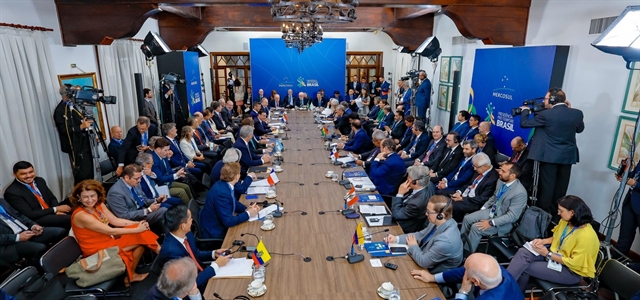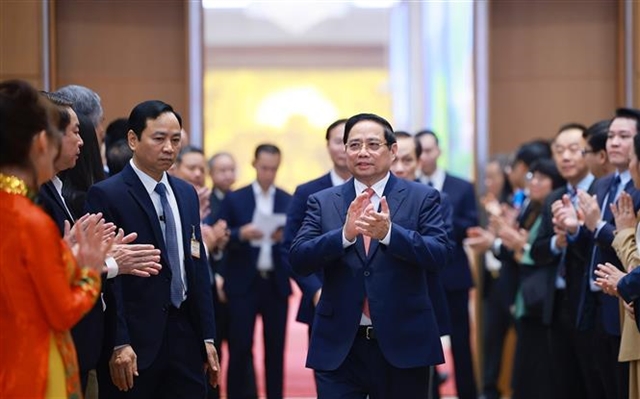 Environment
Environment
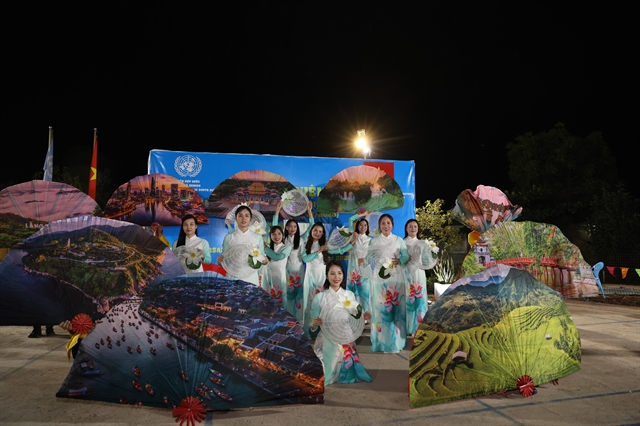
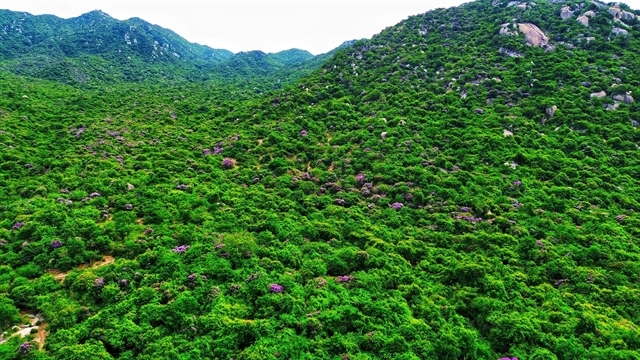 |
| A corner of Thuận Nam protection forests, which contribute to the biodiversity conservation in the south-central coastal province of Ninh Thuận. VNA/VNS Photo Nguyễn Thành |
By Nguyễn Hằng
The Institute of Strategy and Policy on Natural Resources and Environment is actively researching and identifying the value of biodiversity in Việt Nam as part of efforts to develop a mechanism for biodiversity credits.
This is a preparatory step towards ensuring by 2035 under global agreements, polluters, emitters and those responsible for environmental harm will be required to pay fees, while those contributing to biodiversity conservation will receive financial support to carry out their tasks.
Nguyễn Đình Thọ, director of the institute, told Việt Nam News that Việt Nam, along with the rest of the world, was grappling with three global crises of climate change, environmental pollution and biodiversity loss.
The institute had over recent years worked alongside the Ministry of Natural Resources and Environment and the Government to address the three critical issues.
In terms of climate change, Việt Nam had actively engaged in global commitments to reduce emissions by 2050 and was collaborating internationally to establish carbon credits and carbon markets.
Regarding environmental pollution, the institute, together with the ministry and the Government, was in active negotiations to establish a mechanism for plastic credits. (The global mechanism for plastic credits was hoped to be approved at the fifth session of the Intergovernmental Negotiating Committee to develop an international legally binding instrument on plastic pollution, in Busan, South Korea, later this month.)
Additionally, the institute was now working with Dragon Capital and the University of Exeter, the UK, to assess the value of biodiversity in Việt Nam.
The institute had already undertaken preliminary research on the development of biodiversity credits, with the goal of formalising them by 2035.
“The initial steps are part of a broader effort to align with global commitments to protect and conserve biodiversity,” Thọ said.
There were many problems related to how to determine the value of biodiversity in Việt Nam.
“The concept of biodiversity credits is still new and complex,” he said.
"While carbon credits are difficult to establish, plastic credits present an even greater challenge. Biodiversity credits, however, are expected to be the most challenging of all three credit types.”
Thọ also said building an economy focused on restoring biodiversity and ecosystems would provide a foundation for a world in which we can live in a cleaner, greener and more beautiful environment.
Legal framework
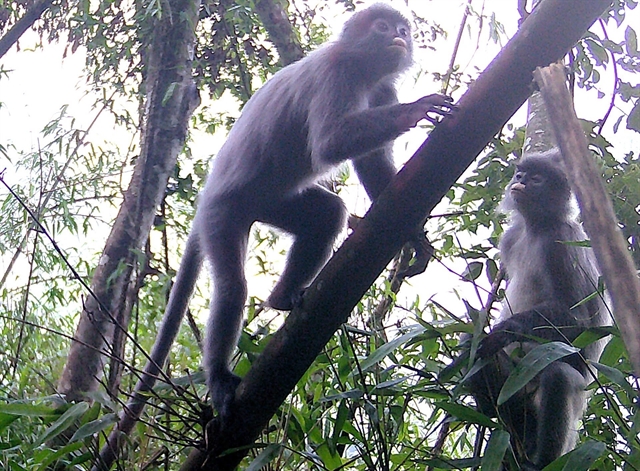 |
| Two grey langurs are captured by camera traps in Pù Hoạt Nature Reserve in Thông Thụ Commune, in the central province of Nghệ An. VNA/VNS Photo |
Thọ further emphasised that the Vietnamese government had made specific commitments to promote biodiversity conservation and ensure a harmonious balance between economic development and the protection of natural ecosystems.
The Government has consistently highlighted the importance of integrating development with the preservation of natural ecosystems.
At the COP26 climate summit in Glasgow, the UK, Prime Minister Phạm Minh Chính said: “Addressing climate change and restoring nature must become the highest priority in all development decisions.”
This commitment is reflected in the Prime Minister's approval on February 1, 2019, for the National Strategy on Biodiversity until 2030, with a vision to 2050. The strategy focuses on developing innovative financial mechanisms to support conservation efforts.
Thọ also said that Việt Nam's economy had already been linked to biodiversity protection through the 2020 Law on Environmental Protection, which includes provisions for ecosystem service payments related to wildlife, plants and natural habitats essential to human life.
“Though Việt Nam has yet to fully develop a biodiverse economy, strategies for protecting forests, mangrove ecosystems, marine biodiversity and other critical habitats are already embedded in national development plans,” he said.
Việt Nam had implemented the Law on Biodiversity and developed the National Strategy on Biodiversity until 2030 with a vision for 2050.
The frameworks clearly outlined the actions required from the Government, businesses, local authorities and citizens to meet biodiversity protection and ecosystem restoration goals.
“The United Nations has declared this decade as the Decade on Ecosystem Restoration, and the Kunming-Montreal agreement sets the target of protecting 30 per cent of terrestrial and marine areas globally. The target will guide Việt Nam’s conservation efforts in the coming years,” he said.
The institute would continue to propose new methods for integrating biodiversity and ecosystem restoration into national economic planning.
That would include embedding biodiversity valuation into environmental impact assessments and strategic environmental planning.
Businesses would be required to consider biodiversity protection in land use changes and emissions reduction efforts.
The efforts aligned with directives from Tô Lâm, general secretary of the ruling party, and Đỗ Đức Duy, minister of Natural Resources and Environment, who had emphasised that Việt Nam would pursue a shift in governance to improve biodiversity protection, environmental preservation and climate change response.
'Fitting well'
Telling Việt Nam News about biodiverse economy, Ben Groom, PhD, Dragon Capital chair in Biodiversity Economics, said: "When we use the term biodiverse economy, it fits very well with Việt Nam, which has incredible biodiversity and incredibly vibrant economy."
"The economy was clearly dependent on the range of biodiversity and natural resources that you had. For that reason it was really important to make sure those resources were used sustainably.
"So the idea of bringing biodiversity and economy together in the same kind of word – biodiverse economy, it really captured that sustainable development was a new paradigm compared to the typical ways in which we would measure the performance of economies, which would usually just be the GDP, the income side of things and ignoring the values that we get from biodiversity."
Speaking at the Conference of Fostering Biodiverse Economy in Việt Nam held on November 7 in Hà Nội, the deputy head of mission of the British Embassy, Marcus Winsley, said that Việt Nam was the perfect place to pursue the goals of conservation and sustainable development of an ecological economy.
Việt Nam is one of the fastest growing economies in the world and one of the most biologically diverse, according to the diplomat. It is also a country whose precious mangroves, forests, tidal flats and lagoons are under increasing pressure.
In 2021, Professor Sir Partha Dasgupta published his review of economics of biodiversity in the United Kingdom.
"The landmark report fundamentally re-examined our relationship with nature and highlighted the urgent need to integrate biodiversity into our economic frameworks,' he said.
“The review encourages us to work together to design roadmaps to rebalance the relationship between the economy and nature.”
As part of the UK’s international contribution to putting the review findings into practice, they are funding the Nature Transition Support Programme.
The programme supports research partnerships to support the delivery of national level roadmaps in line with the review.
It is already operating in biodiversity hotspots such as Colombia and Ecuador.
“We hope it will soon be operational in Việt Nam, given the importance of this country to global diversity and the depth of expertise available," Dasgupta said.
"We are working with partners such as the [Vietnamese] Ministry of Investment to make this happen.”
Imperative for sustainable development
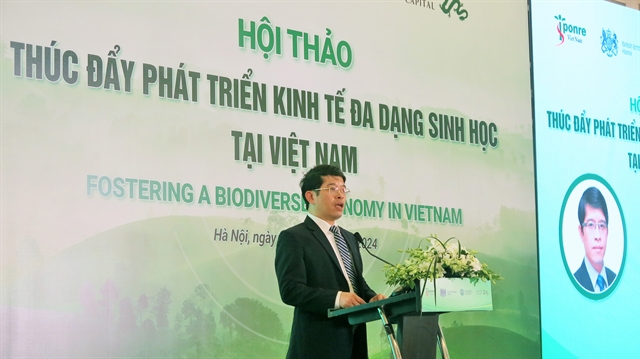 |
| Nguyễn Đình Thọ, director of the Institute of Strategy and Policy on Natural Resources and Environment delivers a speech at the conference in Hà Nội.on November 7. VNS Photo Nguyễn Hằng |
According to the 2024 World Population Review rankings, Việt Nam is 14th globally and among the top three Southeast Asian countries in terms of biodiversity richness.
The country, however, is facing rapid ecosystem degradation due to pressures from socio-economic development, population growth, unsustainable land use practices, natural resource exploitation, environmental pollution and the impacts of global climate change.
The problems pose significant challenges to both the environment and local communities, many of whom rely on ecosystems for their livelihoods.
Thus, institute director Thọ stressed that protecting biodiversity was essential for safeguarding human livelihoods and ensuring the long-term sustainability of the economy.
“Linking biodiversity conservation to economic development is not optional, it is a fundamental requirement,” he said.
The global push for sustainable, inclusive development made it clear that protecting biodiversity was critical for both people and nature.
“By linking the protection of biodiversity to economic development, Việt Nam aims to achieve a balanced and inclusive economy that supports both the current generation and future generations,” he said.
The protection of biodiversity was the foundation upon which a sustainable, inclusive economy would be built, he stressed. VNS


